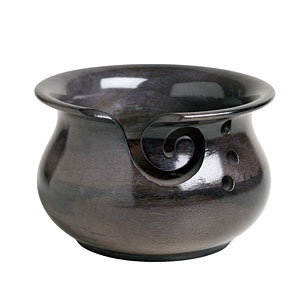- Home
- Beginning Knitting
- Knitting Needle Sizes
Knitting Needle Sizes and Needle Conversion Chart
A knitting needle sizes chart and a knitting needle gauge can be a very handy tool in your knitting bag.
These two little tools for knitting will help you figure out the size of your knitting needles and which ones to choose for your next knitting project.
But Why All The Different Numbers?
The needle sizes depend on:
- Which country you live in
- Which country you're knitting pattern was written
- And where you purchased your knitting needles
The most common sizes are US sizing, UK/Canadian sizing and Metric (mm).
For instance my knitting needles show both the US size and Metric.
Most needles today are clearly marked with the size permanently marked on them.
So what happens if you have a pair that was handed down through the generations?
Great question!
My best answer would be to pick up one of these knitting needle gauges. If you click on the image it will take you to Amazon.
And I'm an associate for Amazon so if you decide to buy it I will receive a small commission.

All you do is poke the needle through the holes to find out exactly what size it is. Then you can check down below on the needle conversion chart to see if it's the right size you need for your project.
And by using a handy knitting needle gauge and needle conversion chart you'll be able to see at a glance all the knitting needle sizes and find the one you need.
Knitting Needle Sizes And Purchasing Straight Needles
One thing to keep in mind when you purchase straight knitting needles is the length of the needles will be marked on the packaging as well as the diameter.
The length can be anywhere from 7 inches to 14 inches and it's important to buy the length you'll need if you're working with a lot of stitches.
But if you're going to be working on relatively small knitting projects you may enjoy working with shorter needles. Why?
They'll be less cumbersome and more comfortable in your hands. I really enjoy using the shorter needles even the child size ones when I can.

Purchasing Circular Knitting Needles
When you purchase circular knitting needles the length will also be marked as well as the diameter. They can range anywhere from 9 inches which is for small circumferences like baby hats and knitting socks all the way up to 60 inches.
The 60 inch circulars are great for bed-size blankets and lots and lots of stitches.
But the most important needle size for knitting stitches is the diameter
This
number will determine the size of the stitches on your knitting
needle and ultimately the size of your finished knitting project.
The thicker the needle the bigger the stitches and the thinner the needle the smaller the stitches. It has to do with knitting gauge and it's something I will teach you about as well.
Below I have made a knitting needle conversion chart for you to have a look at and then download if you like.
Just slide it into your knitting bag so you can access it easily when you need it. That way you will be prepared for whatever size needle your pattern calls for.
Here's the link for my knitting needle sizes chart.
KNITTING NEEDLE SIZES CHART
Common Knitting Needle Sizes
Metric (mm)
2.0
2.25 - 2.50
2.75
3.0
3.25
3.5
3.75
4.0
4.5
5.0
5.5
6.0
6.5
7.0
7.5
8.0
9.0
10.0
12.0 - 12.75
16.0
19.0
20.0
25.0
US
0
1
2
--
3
4
5
6
7
8
9
10
10.5
10.75
--
11
13
15
17
19
35
36
50
UK/Canadian
14
13
12
11
10
--
9
8
7
6
5
4
3
2
1
0
00
000
--
--
--
--
--
Hope this helps. Happy Knitting!













